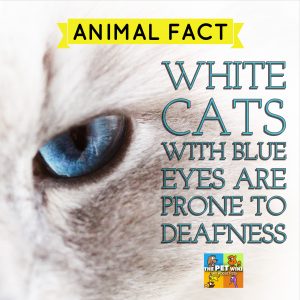 Not all white cats are deaf. And white cats are not albino. Due to lack of pigmentation, an albino cat will have pink eyes and be sensitive to light.
Not all white cats are deaf. And white cats are not albino. Due to lack of pigmentation, an albino cat will have pink eyes and be sensitive to light.
White cats have genes that carry color. But they have another gene that causes masking of the color. This means that all colors are covered or masked and melanin is prevented from developing.
Melaninoyte cells form melanin on the skin. Melanin is responsible for the natural colors of skin, hair, eyes, fur, feathers, scales. As another of its many jobs, melanin also offers some protection for skin exposed to sun.
When melanin does not develop, the cochlea in the ear is affected. The cochlea is constructed of 3 coiled tubes and is responsible for sending impulses to the brain to aid in hearing. Without melanin, the cochlea degenerates causing permanent deafness.
Some cats have a white spotting gene which is a genetic mutation and aren’t actually white. When the spot is very large, it covers their whole body and the cat’s fur is all white. Cats with white masking can have this gene as well. If a cat has even one single colored hair, it is not considered white, but has white spotting.
Blue-eyed white cats are deaf due to spotting or masking reaching the eyes concealing the original color. Usually if the eyes are affected, the ears are too.
Cats with odd-colored eyes are likely to be deaf on the side with a blue eye. But not all odd colored eyed cats are deaf.
Deafness occurs early in these cats’ lives and they learn to adjust to living without hearing. With patience, training (you and the cat) and special attention, deaf cats do very well and make delightful companions.


